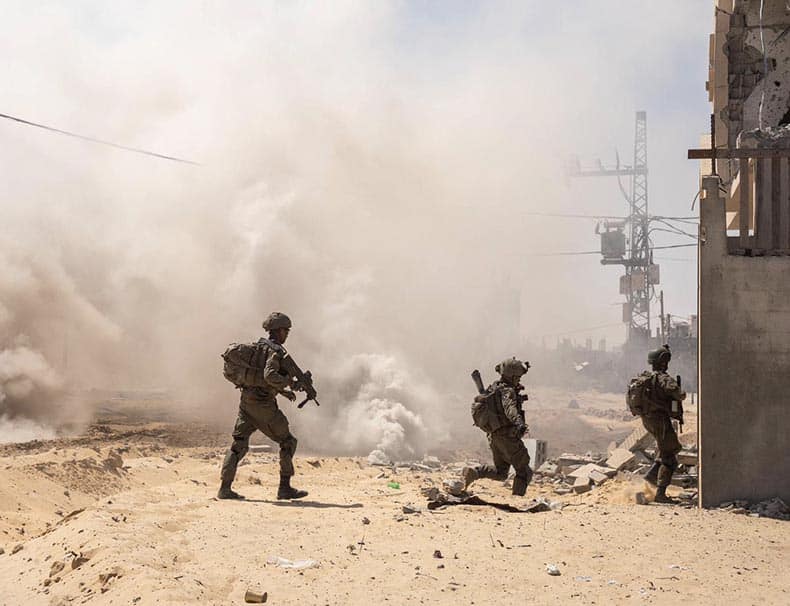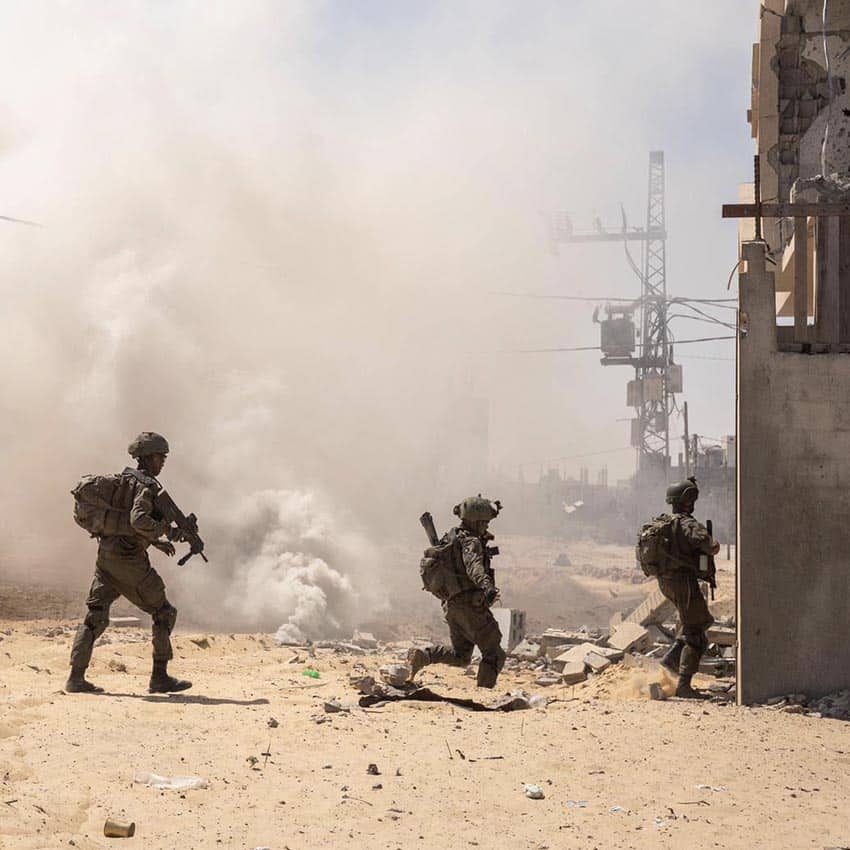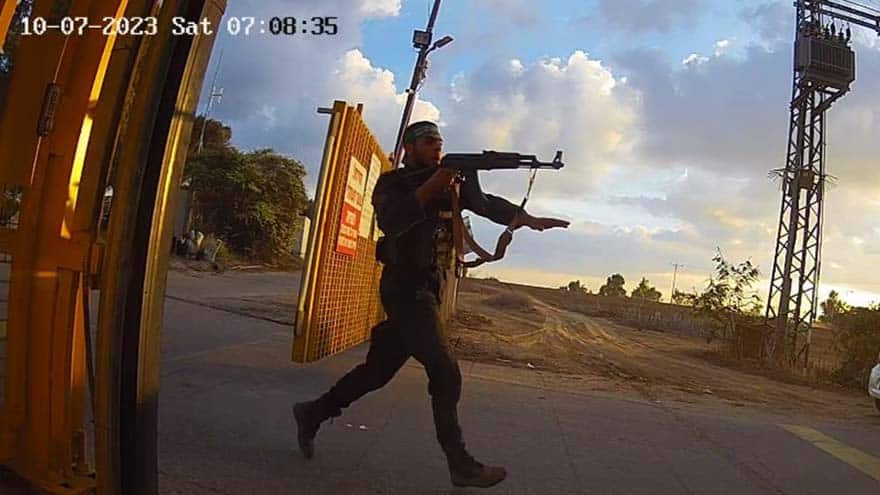On the second anniversary of the Iron Swords War, which has become the longest war in the country’s history, the question resurfaces: how is it that Israel has still not succeeded in defeating Hamas? This is a relatively small battlefield – 365 square kilometers – home to one of the weakest enemies we faced until October 7, 2023, and the lowest of them after having been severely beaten by the IDF since that black Saturday.
Before addressing the reasons and explanations, it is essential to touch on the concept of “defeat” in the context of a semi-state terrorist organization like Hamas. Defeat is a military concept rooted in the realm of inter-state industrial wars, characterized by armed clashes between two or more state armies, fought on defined fronts—even when these spread into populated areas. Such wars are conducted with adherence to the distinction between combatants and civilians, in accordance with international laws of war, even if these are occasionally violated. Ceasefires are managed by state actors and recognized international institutions, such as the UN. In this world, to defeat an army means to deny it the capability or the will to continue fighting. Since state armies act in the name of states that, in the vast majority of cases, behave responsibly and are constrained by a wide range of considerations tied to their institutions, economies, and especially the welfare of their citizens, they are subordinate to leadership and operate under its political directives.
In the world of non-state or semi-state actors like Hamas, where the political leadership is also the military leadership—or where the military outweighs the political—and where there is no commitment to international law or norms and no exposure to external pressures, the conduct is entirely different. In the case of Hamas, it is a religious terrorist organization with a nationalist sentiment, but driven by a supra-national ideology committed to the re-establishment of the Islamic Caliphate.
Systematic Suppression of Terror and Reducing the Potential for Damage
The separation between civil-political and military domains is almost nonexistent in such a world, with fully porous boundaries between them. The military arm—the terrorist army that Hamas succeeded in building over the years, partly with Iranian support—is more significant and influential than the organization’s civil-political-religious apparatus. Despite being the sovereign in the Strip since the military coup of June 2007 and despite institutionalization processes that created the illusion, which in turn led to the Israeli conception that Hamas was committed to the welfare of its citizens, to economic improvement, and to the development of state-like institutions, Hamas has essentially remained an organization dedicated to the destruction of the State of Israel. It built its capabilities and indoctrinated the Palestinian public in Gaza toward this goal.
The organization grew from within the population, and with its support, most of that population continued to support it throughout the years since it seized power. Even after October 7, this support remains significantly stronger than that enjoyed by Fatah, and Hamas is deeply embedded within civil society, operating from within it and under its cover. Hence, it can use civilians as human shields, with an explicit willingness to sacrifice many of them in pursuit of what it considers a divine victory.
Under such conditions, the organization has no single critical center of gravity whose collapse would necessarily bring about its downfall, as is the case with state armies. Therefore, its defeat, in terms familiar from the world of inter-state wars, is almost impossible without widespread destruction of the civilian population—an act amounting to a war crime, genocide—something Israel will never do.
The expectation among many in the Israeli public for a clear victory image in the style of the Six-Day War, or a declared surrender by Hamas with the raising of a white flag, is an illusion. It seems that Israel’s government and military command are sober enough and aware of the difficulties inherent in defeating Hamas in the same manner as the Arab armies in 1967 or even in the Yom Kippur War. For Israel’s political and military leadership, defeating Hamas means dismantling the organization as an effective governing and the army entity, establishing Israeli army control in the area (as in the West Bank and southern Lebanon), setting up an alternative civil administration to Hamas, and shaping a new security reality in Gaza—one that denies Hamas and/or any other Palestinian terrorist organization the ability to generate a significant security threat to Israel, such as that of October 7.
Israel does not expect a white flag to be raised and is fully aware that defeating Hamas, in its definition, does not mean killing the last terrorist and destroying every rocket. Israel also knows that the war against Palestinian terror in Gaza will continue for many years, as in the West Bank, but that it will be conducted under different conditions—with Israeli intelligence and operational superiority and complete freedom of action—conditions that will allow the systematic suppression of terrorism and a significant reduction of its potential for damage.
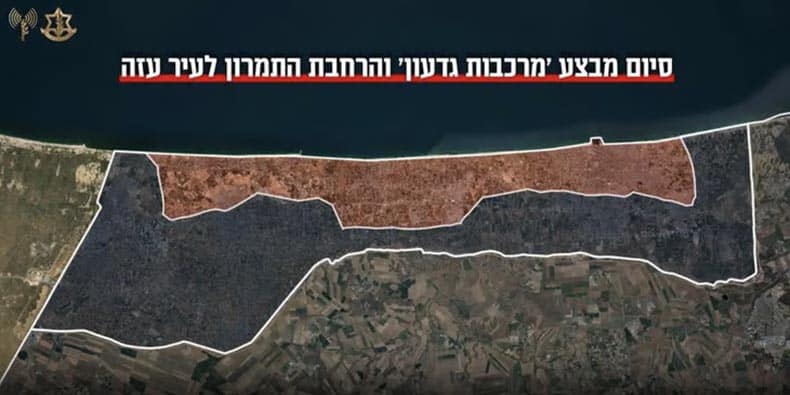
The Mistake of Military Reservations About Conquest
Having clarified the complexity of defeating Hamas, it is essential to revisit the question: why has Israel not yet achieved this goal? The answer is not particularly complicated but is composed of a set of reasons and developments, most of which were forced upon Israel. What was not forced on us was the strategic choice in managing the offensive during the first stage of the war. Israel’s choice to attack Hamas and the Gaza Strip in a very gradual manner—starting in the north and only later moving to other areas—proved mistaken. The method of conquering territory, clearing it of terrorist infrastructure, abandoning it, and preparing to return with pinpoint strikes also turned out to be problematic, as Israel found itself returning to the same areas three, four, and five times.
The reservations and reluctance of the military echelon to conquer the entire Strip and impose military rule already in the early stages of the war—a hesitation that persists to this day—also proved to be a mistake, certainly about the military dimension of the campaign, and prevented the defeat of Hamas. At the same time, it placed a heavy strain on the relations between the political and military echelons, eroding trust between them and harming their ability to formulate a strategic purpose and a coherent strategy jointly.
Yet beyond these reasons, which stem from Israel’s flawed strategic and operational decisions, the more substantial causes lie outside the sphere of considerations and choices.
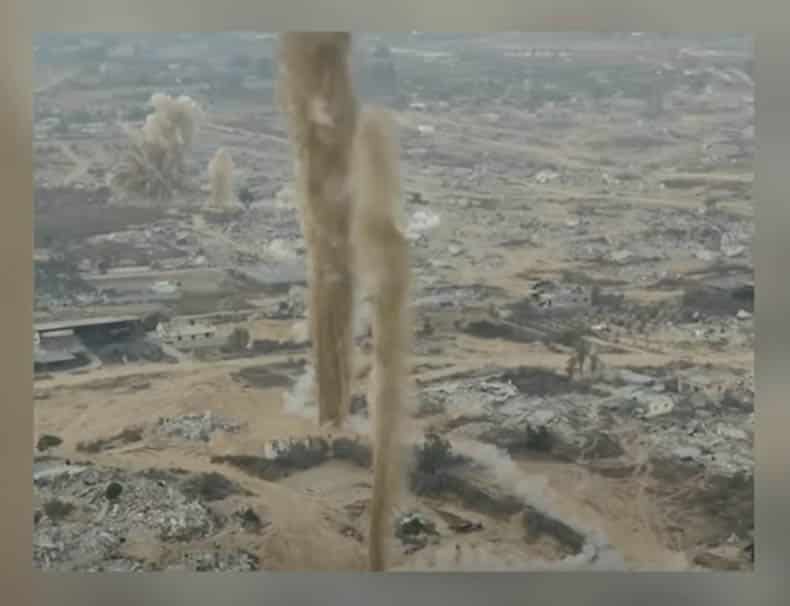
A System of Pressures, Internal and External
Beyond the fact that Israel was drawn into a regional, multi-front war and therefore had to allocate forces to defend the northern border and prepare for defense and offensive operations on other fronts—which disrupted the ability to concentrate all or most of its military effort on the Gaza Strip—it also very quickly found itself exposed to an unbearable system of international pressures devoid of any strategic or moral logic.
The international community, including the American administration, which was horrified by Hamas’s murderous and barbaric attack on October 7, 2023, and hurried to express solidarity with Israel and deep empathy for its pain and loss, lost its memory very quickly. Once reports began to emerge—exaggerated and mostly false—about the scope of Palestinian civilian casualties, that same community rushed to impose on Israel the entry of vast and uncontrolled amounts of humanitarian aid into the Strip, including into active combat zones, that is, to Hamas.
In practice, Israel found itself fighting Hamas while simultaneously feeding the murderous terrorist organization and allowing it to continue sustaining itself and even take over the majority of the humanitarian aid intended for Gaza’s civilians—plundering it for its own purposes and selling the remnants at exorbitant prices to needy civilians. Hamas’s control over the distribution of humanitarian aid enabled it to preserve its mechanisms of territorial and especially population control, suppressing any possibility of rebellion and the establishment of an alternative civil administration that might gain public support. The public continued to believe that Hamas would remain the effective sovereign of the Gaza Strip.
Beyond international pressure, Israel was also subjected to a malicious and severe system of pressures, built on false narratives spread by Hamas and echoed by much of the global media, international aid organizations, and the UN. This included civilian casualty numbers, the starvation narrative, and the narrative of Israeli war crimes. Despite immense, unprecedented, and extraordinary efforts made by the IDF toward the civilian population to reduce collateral damage, and even though the ratio of civilian to terrorist casualties was the lowest in the history of urban warfare, Israel received no grace or recognition for its efforts.
Hamas, having understood how the international media operates and its tendency to embrace its false and biased narratives, seized the opportunity and, with undeniable skill, succeeded in amplifying the effect and thereby the pressure on Israel, while horrific images, many of them fabricated or AI-generated, flooded television screens and front pages of newspapers. In addition, Qatar’s Al Jazeera network bolstered Hamas’s propaganda efforts, acting as the group’s megaphone, with nearly all of its reporters in Gaza in fact being active operatives on Hamas’s payroll.
Hamas also skillfully exploited the hostage issue, using vile and cruel psychological operations to stoke tension in Israel’s streets and deepen divisions within society—between social groups, between civil society and the government, and between the military and political echelons. The domestic pressure campaign on the government began as a painful and authentic protest by many hostage families. It continued with the involvement of opposition organizations that exploited the event as a political platform under the guise of supporting the families’ protest. This placed a heavy burden on Israel’s government, constraining its maneuvering space.
The hostage protest did not remain only within Israel’s public sphere; it spread internationally, particularly to the United States, in a way that drew American administrations—under both Joe Biden and later Donald Trump—into intense and significant involvement, mainly because some of the hostages were American citizens. The Biden administration, which supported Israel and provided it with substantial military and international aid, at a certain point became critical and reserved toward us, especially toward Prime Minister Netanyahu. The administration imposed heavy restrictions on Israel regarding the evacuation and conquest of Rafah, including the Philadelphi Corridor, opposed a ground operation in southern Lebanon and the elimination of Hezbollah’s leadership, and at one point during the war even imposed a partial arms embargo on Israel.
The tension between the Biden administration and the Israeli government did not escape Hamas’s notice, and the group worked to fuel it through successful propaganda campaigns, exploiting the administration’s misreading of the unfolding reality and the scale of Israel’s challenge. The Biden administration pressured Israel to advance negotiations to end the war and release hostages, even at the cost of concessions that were impossible and intolerable from Israel’s perspective, thereby playing into Hamas’s hands and encouraging its leadership to harden its positions.
In recent months, the international pressure campaign against Israel has spilled over into economic and cultural spheres. It has spread to more and more countries in Europe and around the world, leading to boycotts and refusals to allow planes and ships carrying weapons bound for Israel to pass through. The peak of the international pressure campaign came at this month’s UN General Assembly, where a series of resolutions regarding the establishment of a Palestinian state were adopted, spearheaded by France and Saudi Arabia, with the decision itself presented or explained also in terms of punishment against Israel.
Fighting Among Civilians: The Hypocrisy and Moral Failure of the World
Beyond all this, it is essential to address the characteristics of the battlefield itself. Over the past decade and more, Hamas has succeeded in building an extensive and sophisticated network of hundreds of kilometers of tunnels throughout the Gaza Strip. This network enables free and secure movement across the territory, providing shelter for the organization’s operatives and infrastructure for terrorist and guerrilla activities. A system of command-and-control rooms, weapons depots, rocket launch sites, and storage facilities for food, water, and fuel—shielded by residential buildings and humanitarian facilities such as hospitals, clinics, schools, and mosques—grants Hamas endurance and survivability.
No army in the world has experienced a war in such a subterranean dimension, and the IDF developed its capabilities in real time during the war itself. Even after developing doctrine, tools, and professional units, and even after becoming the most skilled and experienced army in the world in fighting tunnel warfare, the task of destroying the tunnels remains extremely complex, slow, and prolonged. Since the tunnels are connected via shafts to residential buildings and civilian facilities, the IDF is forced to act with utmost caution, destroying large numbers of buildings across the Strip while exposing its forces to enemy fire. The fact that Hamas is deeply embedded within Palestinian civil society, continuing to enjoy its support—or coercing it to serve as human shields—makes the IDF’s task all the more difficult, requiring vast efforts and resources to evacuate civilians and conduct a complex and challenging war while striving to minimize harm to noncombatants.
Fighting among civilians becomes nearly impossible when the IDF faces immense difficulties from the international community in evacuating residents from combat zones and is accused of “transfer” and “genocide.” The conduct of the global community in this regard suffers from troubling moral weakness, hypocrisy, and even antisemitism. Through its actions and behavior, it does everything possible to deny the IDF the ability to dismantle Hamas and end the war.
Above all these constraints looms the most sensitive issue of all—the hostages. The IDF must act with extreme caution and avoid operating in areas where hostages are held for fear of harming them. This constraint, rooted in the core values of Israeli society and the IDF, is well known to Hamas and deliberately exploited by it, as the organization uses the hostages as human shields.
The War of the Entire Free World
Despite all the constraints and complexities, the IDF has achieved remarkable successes that have effectively dismantled Hamas of most of its organized military capabilities. The organization’s entire senior command chain has been eliminated; tens of thousands of its operatives have been killed; its command-and-control infrastructure is nearly nonexistent; its independent weapons production capabilities have been almost destroyed, as have the vast majority of its rocket stockpiles. Hamas has lost its intelligence capabilities and vast amounts of money seized by the army. In practice, Hamas can no longer function as an organized terrorist army, and even its civilian governance has become much weaker. The IDF now controls more than seventy percent of the Strip’s territory and about forty percent of Gaza City, the last significant stronghold of Hamas.
The main problem is that most of the Palestinian population remains concentrated in the thirty percent of territory not yet under Israeli control. Hamas’s dominance in those areas—particularly over the distribution of humanitarian aid—grants it continued leverage over the civilian population. Therefore, Israel’s primary effort at this stage is to move civilians into the humanitarian shelter zones the army has prepared in the southern Strip, allowing freer and more intensive maneuvering in the Gaza City area, which will lead to the final dismantling of Hamas’s remaining organizational structures. With the fall of Gaza City and later the central refugee camps, the process of dismantling Hamas will be completed, paving the way for the establishment of an alternative civilian authority. Only then will it be possible to speak of Hamas’s defeat.
Yet to ensure Hamas’s total defeat and deny it any future chance of recovery, Israel must also eliminate the organization’s external leadership, which has become the center of gravity after the elimination of its Gaza leadership. This is what Israel attempted to do in the strike on Khalil al-Hayya’s home in Doha, Qatar—apparently without success—and it will have to finish the job at the next operational opportunity.
The war is long and bloody. It began with a terrible disaster for Israel, a humiliating tragedy that has left a deep scar on the collective memory of the nation for generations to come. It has continued with a series of impressive achievements, extending far beyond the Gaza Strip, that have reshaped the entire regional architecture and neutralized—or at least dramatically weakened—the resistance axis led by Iran. When the Gaza war ends, Israel and its army will record a historic and decisive victory, and the course of the entire war—and the Gaza campaign in particular—will be studied for many years to come in military colleges worldwide.
Israel has paid a heavy and unbearable price. It will face long-term recovery efforts—both domestically and on the international stage—even though it has also been fighting the war of the free world against radical Islamic barbarism, which is now entrenching itself and spreading further afield. Citizens of the free world are awakening to their own battle for their identity, culture, and liberty. At the same time, Israel has stood as a kind of last fortress, bearing the burden of war and challenge with courage and determination. For this, it deserves international recognition—recognition that will surely come in due course.
